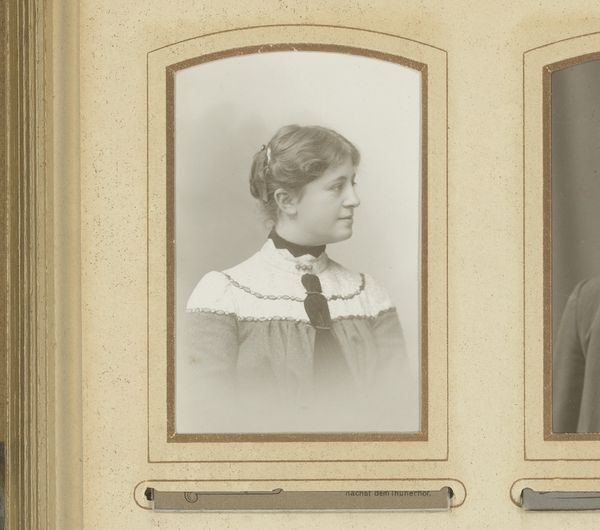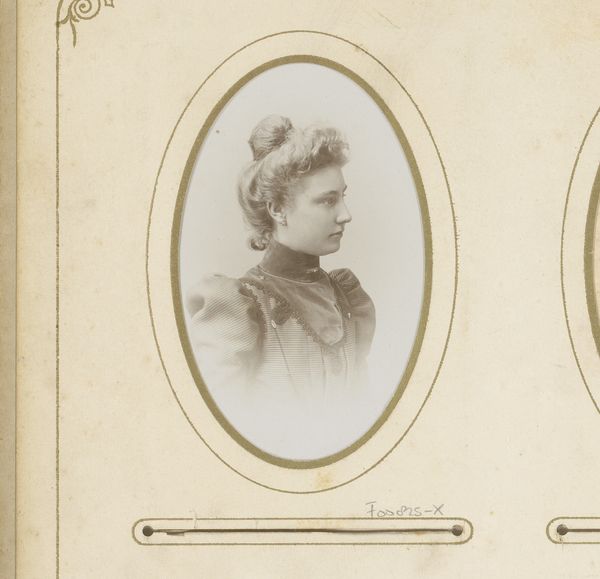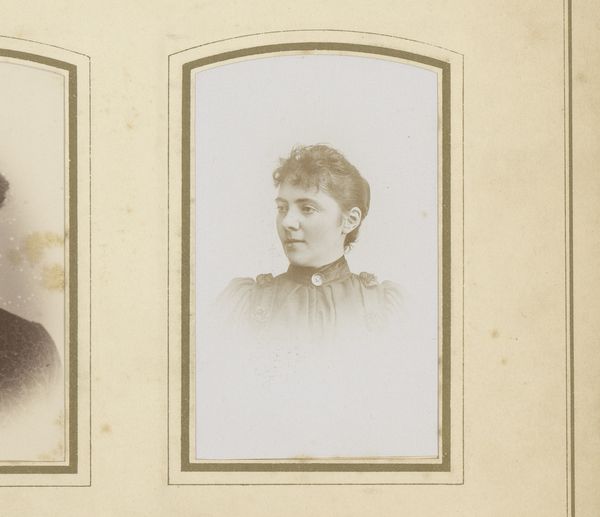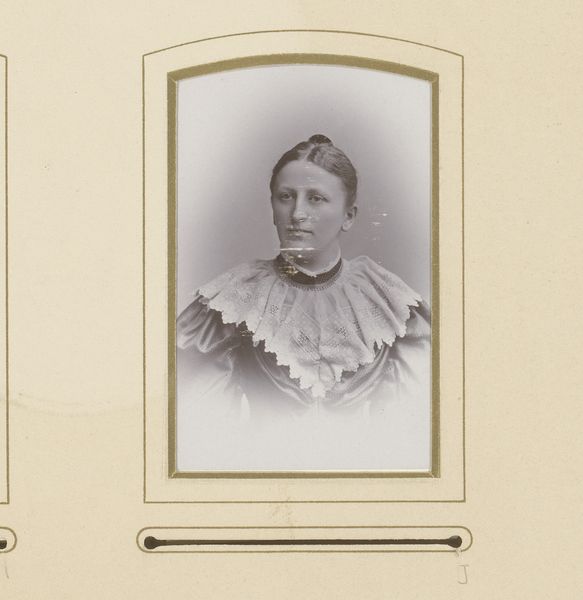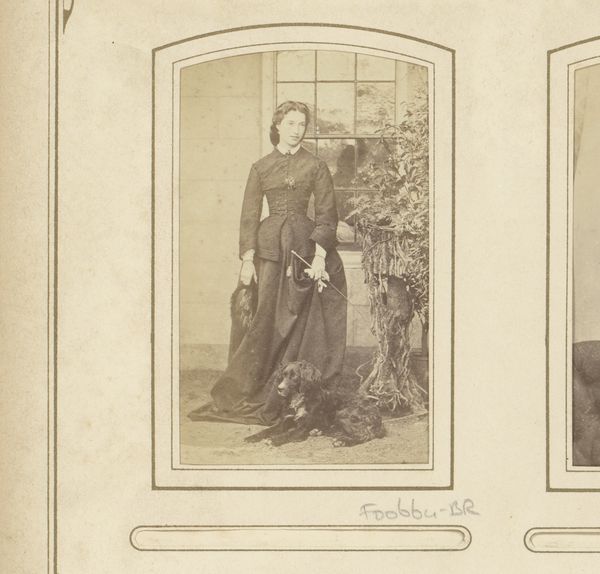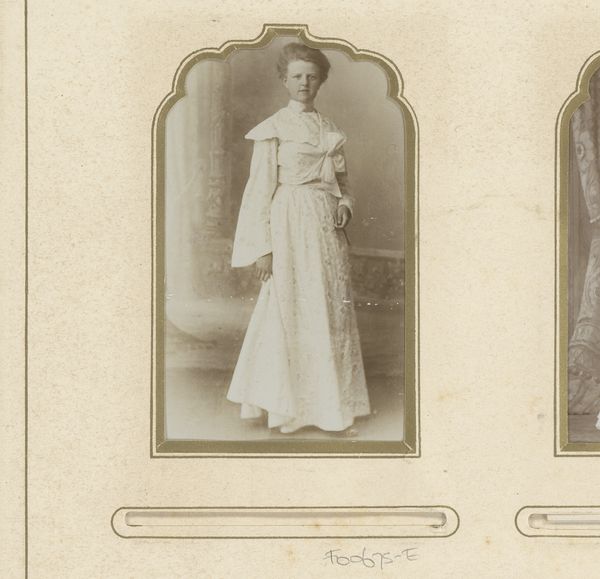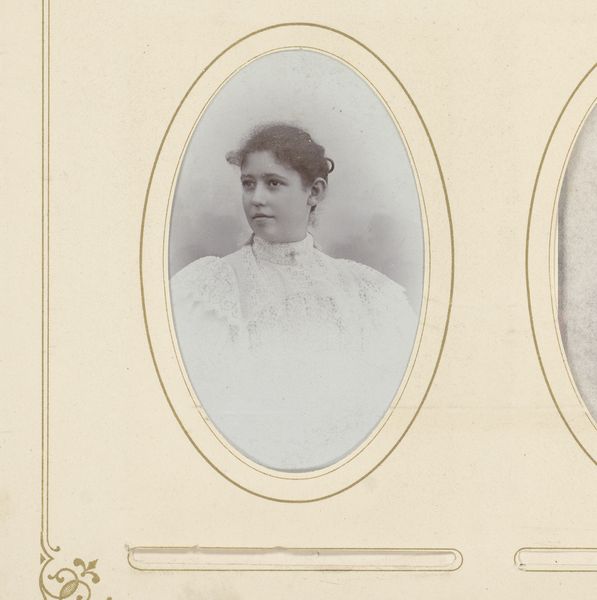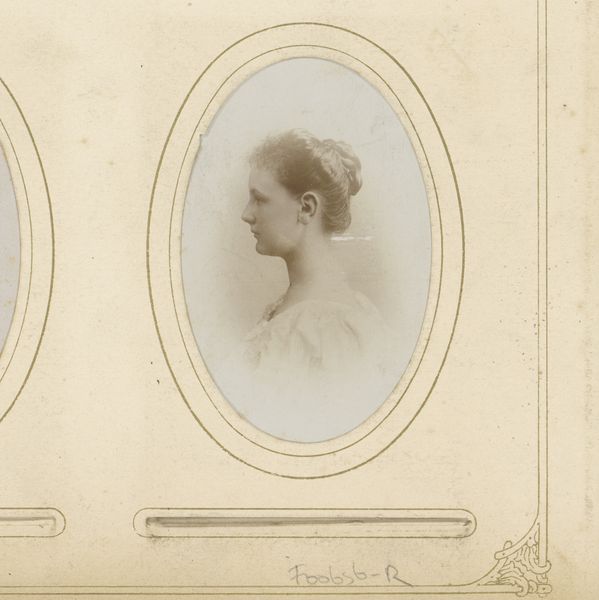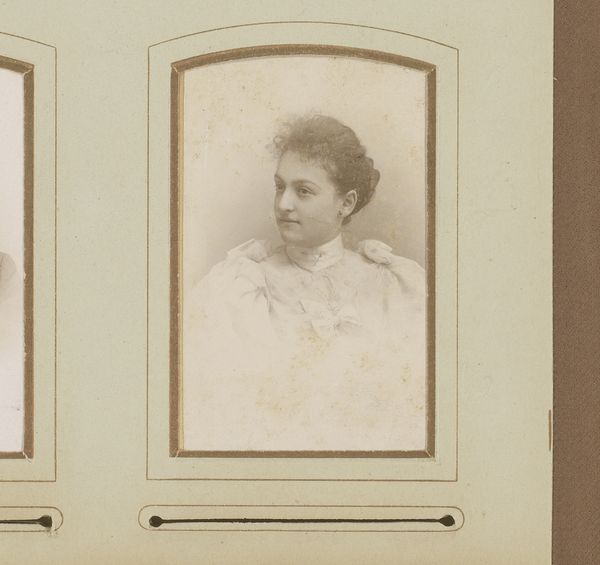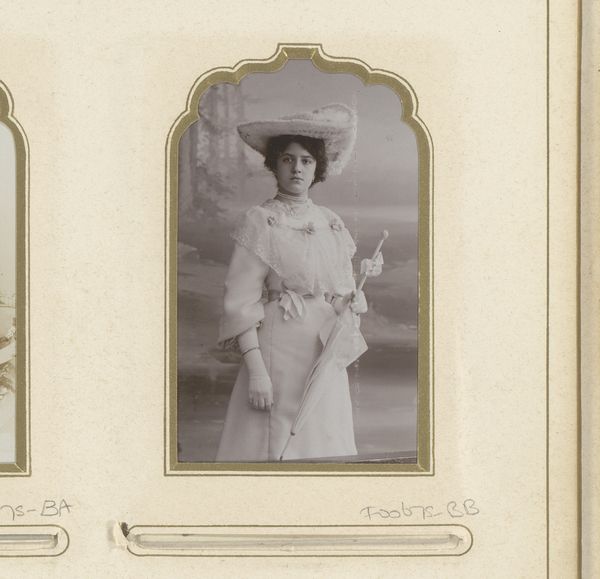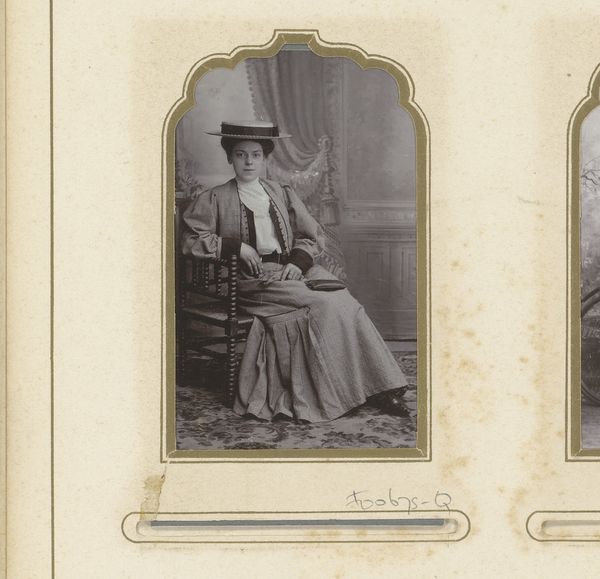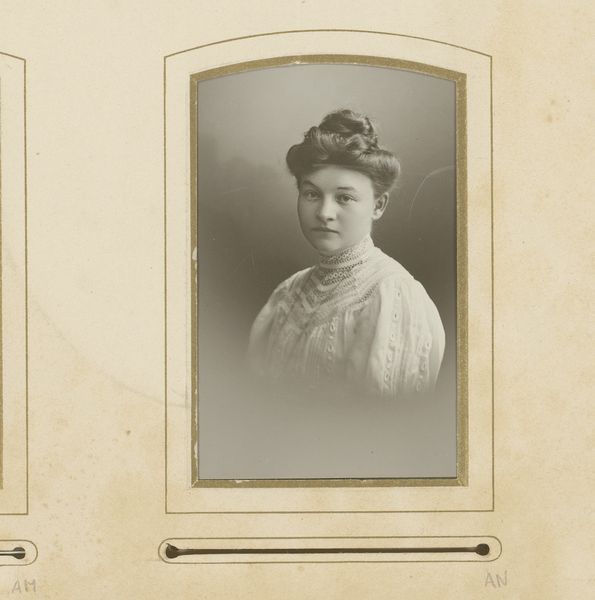
photography
#
portrait
#
photography
#
historical photography
#
19th century
Dimensions: height 85 mm, width 51 mm
Copyright: Rijks Museum: Open Domain
This small portrait by Paul Mende captures a woman in what appears to be a photograph. The sepia tones are a product of the chemical processes involved in early photography. We can consider the way that photography changed portraiture. Previously, the creation of a portrait was a long, labor-intensive process, accessible only to the wealthy. Photography democratized portraiture, making images more accessible and prompting a shift in function. The subject here is dressed in a ruffled dress which could be made by machine. It appears that the mechanization of fabric production, and the invention of photography, have had a material influence. There is much care and skill involved in Mende’s handling of the medium, and it is this human labor, alongside the technologies of industrial production, which endows this work with social meaning. Understanding the historical context and the labor involved in both the creation and consumption of such images encourages us to reflect on the democratization of art and the evolution of portraiture.
Comments
No comments
Be the first to comment and join the conversation on the ultimate creative platform.

